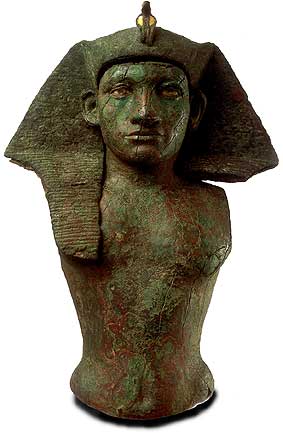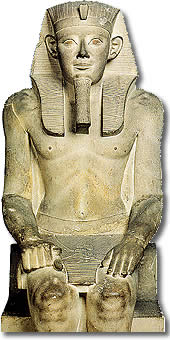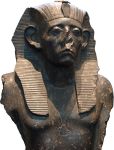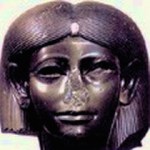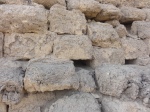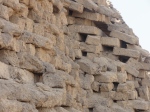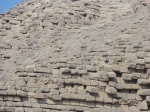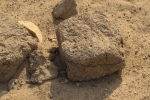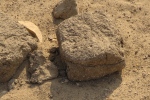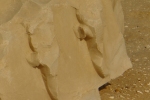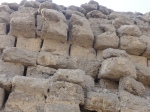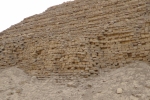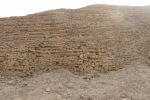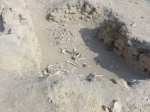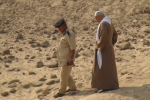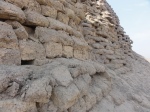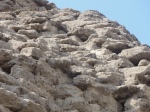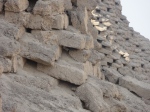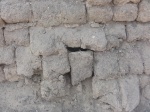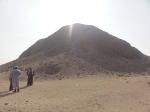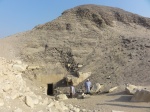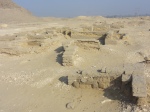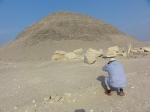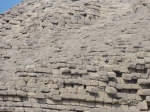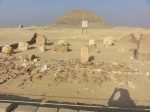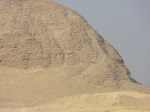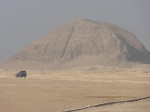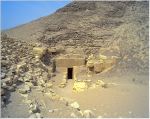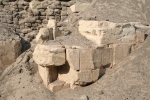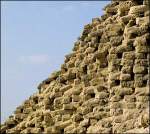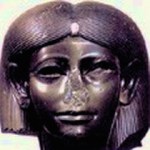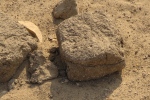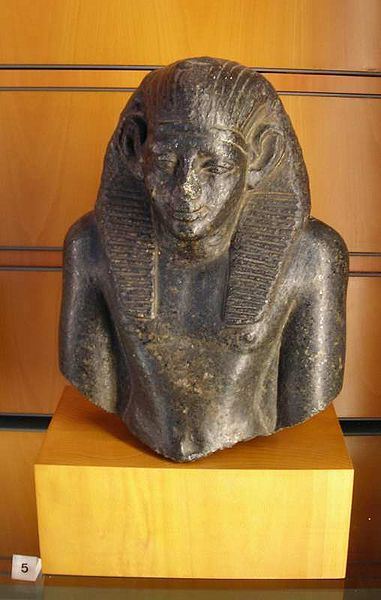Moses was an Israelite who was adopted by the Pharaoh’s daughter and raised as her own. Moses spend the first 40 years of his life growing up in Pharaoh’s household. There was no change of pharaoh during this time. As the princess did not have any other children, Moses would have become the next pharaoh if he did not have to flee to Midian after showing his loyalty to the Israelites.
Moses was born 80 years before the Exodus and fled to Midian 40 years before the Exodus.
Moses was born during the Israelite Oppression at a time when the Pharaoh was trying to kill all the Hebrew baby boys.
The Israelites had been in Egypt for 430-80=350 years and had been forced into slavery for about 150 years since the start of the 12th dynasty.
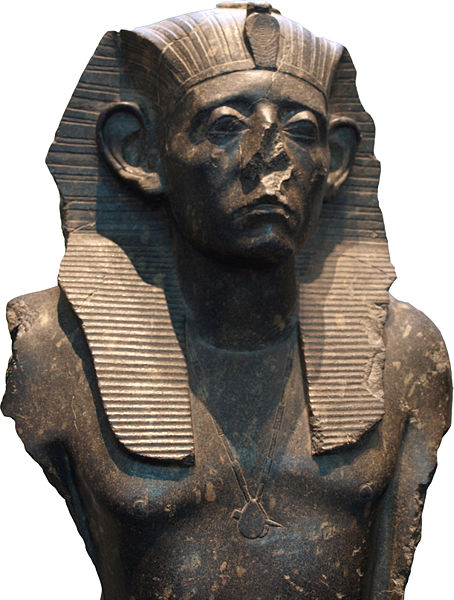
Senusret III (Sesostris III) – (The father of Amenemhet III)
Amenemhet III, the 6th pharaoh of the 12 dynasty, the last pharaoh to build a great pyramid, had an ambitious building program. His first pyramid at Dashur had flawed foundations and so he built a second pyramid at Hawara. He also build the Labyrinth; considered, in it’s day, to be one of the great wonders of the world by Heroditis. Both of his pyramids were constructed with a core that contained millions upon millions of mud bricks (as was the case for all the pyramids of the 12th dynasty). The labyrinth was a mortuary building that had over one thousand rooms. It was also built from mud bricks and was equal in grandeur to the pyramids themselves.
The Israelites now numbered around 2 million and the Bible says that their chief occupation was making mud bricks for the Pharaoh.
Petrie found a workers village at Kahun, not far from Hawara, where the 12th dynasty pyramids were centered. From his detailed collection of scarabs found in the village, he was able to determine that the village had been occupied from the time of Sesostris II (Senusret II) up until the time of Neferhotep I. The village appeared to have been evacuated fairly suddenly. Petrie also found numerous boxes containing the skeletons of one, two or three babies at a time. The boxes were found under the floors of the houses in the village and were left almost to commemorate the deaths hundreds of babies in the town.
The thirteenth dynasty was only a short dynasty but there was a quick succession of Pharaohs. Neferhotep I was the longest ruling pharaoh of that dynasty, ruling 11 yrs. His body was never found. As the slave village at Kahun was occupied up until the time of Neferhotep I and Neferhotep I ruled 20 to 30 years after the end of the 12th dynasty, it is likely that Neferhotep I was the Exodus Pharaoh whom Moses confronted when he returned from Exile.
There was a large Exodus of slaves during the reign of Neferhotep I according to Petrie. These slaves lived in Kahun which was a workers village for the builders of the 12th dynasty pyramids.
It is quite likely that these slaves were the Israelite slaves who were lead out of Egypt by Moses when he was 80yrs old, 30 years after the 12th dynasty ended.
The 6th pharaoh of the 12th dynasty Amenemhet III, the last pharaoh to construct any pyramids, constructed 2 mud brick pyramids and the labyrinth. He reigned for 46 yrs and so he was reigning long enough to have seen Moses adopted by his daughter (Sobeknefru) and reach 40 years of age.
Amenemhet III did have a 9 year co-regency with a figure called Amenemhet IV whose ancestry is not recorded in Egyptian records. Amenemhet IV suddenly disappeared and never got to reign over Egypt by himself.
When Moses-Amenemhet IV fled to Midian, the 12th dynasty continued for another 10 years. When Amenemhet III died 2 yrs after Moses fled to Midian, Sobeknefru had to assume the throne as there were no other heirs. She only lived for another 8 yrs and when she died, the 12th dynasty ended. Egypt became unstable and there was a rapid succession of pharaohs in the 13th dynasty until Neferhotep I.
The loss of Moses-Amenemhet IV in itself was a big blow to Amenemhet III as it meant that he had no male successor to the throne. His daughter Sobeknefru had to take over when he died. She did not build a pyramid and there are very few monuments commemorating her. Amenemhet IV’s tomb and mummy have never been found. This is likely to be because Amenemhet IV was Moses who fled to Midian and then returned 40 years later to confront a different pharaoh (Neferhotep I), and lead the Israelites out of Egypt.
The Exodus of the Israelites was an even bigger blow to Egypt because Egypt lost not only it’s slave labor force, it lost it’s army, it’s pharaoh, it’s transportation system, it’s firstborn children and much of it’s crops and animals. It is little wonder that Egypt was not able to undertake massive projects like the construction of pyramids after the Exodus had taken place. What’s more, Egypt had lost all of it’s defenses and was recovering from the plagues that had besmitten it. Consequently, Egypt was vulnerable to invasion and this is just what happened. Egypt was invaded by the Hyksos (also known as the Amu or the Amalekites) shortly after the Exodus. The Hyksos set up a fort at Avaris where they occupied and controlled Lower Egypt for the next 400 years. During this time, the Israelites were in the wilderness for 40 years and then in the Promised Land where they were ruled by a series of Judges.
This slideshow requires JavaScript.
